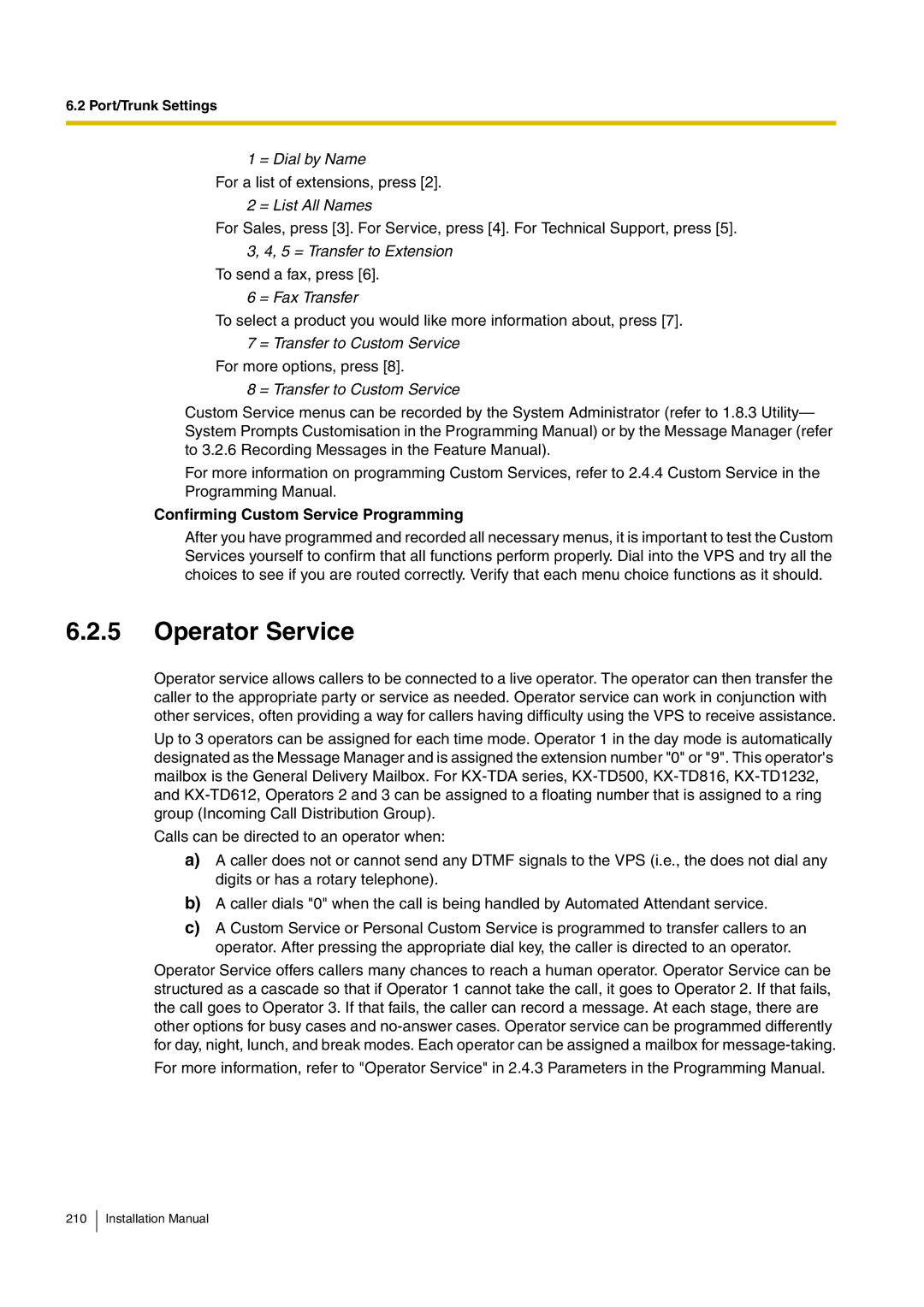
6.2 Port/Trunk Settings
1 = Dial by Name
For a list of extensions, press [2].
2 = List All Names
For Sales, press [3]. For Service, press [4]. For Technical Support, press [5].
3, 4, 5 = Transfer to Extension
To send a fax, press [6].
6 = Fax Transfer
To select a product you would like more information about, press [7].
7 = Transfer to Custom Service
For more options, press [8].
8 = Transfer to Custom Service
Custom Service menus can be recorded by the System Administrator (refer to 1.8.3 Utility— System Prompts Customisation in the Programming Manual) or by the Message Manager (refer to 3.2.6 Recording Messages in the Feature Manual).
For more information on programming Custom Services, refer to 2.4.4 Custom Service in the Programming Manual.
Confirming Custom Service Programming
After you have programmed and recorded all necessary menus, it is important to test the Custom Services yourself to confirm that all functions perform properly. Dial into the VPS and try all the choices to see if you are routed correctly. Verify that each menu choice functions as it should.
6.2.5Operator Service
Operator service allows callers to be connected to a live operator. The operator can then transfer the caller to the appropriate party or service as needed. Operator service can work in conjunction with other services, often providing a way for callers having difficulty using the VPS to receive assistance.
Up to 3 operators can be assigned for each time mode. Operator 1 in the day mode is automatically designated as the Message Manager and is assigned the extension number "0" or "9". This operator's mailbox is the General Delivery Mailbox. For
Calls can be directed to an operator when:
a)A caller does not or cannot send any DTMF signals to the VPS (i.e., the does not dial any digits or has a rotary telephone).
b)A caller dials "0" when the call is being handled by Automated Attendant service.
c)A Custom Service or Personal Custom Service is programmed to transfer callers to an operator. After pressing the appropriate dial key, the caller is directed to an operator.
Operator Service offers callers many chances to reach a human operator. Operator Service can be structured as a cascade so that if Operator 1 cannot take the call, it goes to Operator 2. If that fails, the call goes to Operator 3. If that fails, the caller can record a message. At each stage, there are other options for busy cases and
For more information, refer to "Operator Service" in 2.4.3 Parameters in the Programming Manual.
